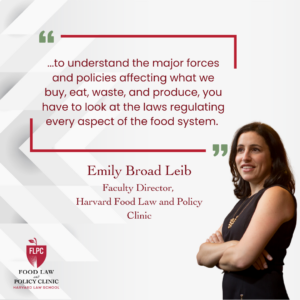Written by Hanh Nguyen, Whole Person Care Project Assistant.
On March 7th, 2018, CHLPI, Farmworker Justice, and the Bristol-Myers Squibb Foundation, in conjunction with the Congressional Hispanic Caucus’ Health Task Force, hosted a Congressional Briefing on telehealth and the use of Community Health Workers (CHWs) as critical strategies for improving access to and quality of care in rural communities. The Briefing coincided with the release of The Promise of Telehealth: Strategies to Improve Quality of Healthcare in Rural America that explored barriers to, and opportunities for, increasing the use of telehealth in rural safety net care settings, such as Federally Qualified Health Centers.
Rural residents in the U.S. face unique challenges that limit their ability to access quality healthcare. These challenges, including shortages of practicing physicians, lack of resources, and limited access to health insurance, contribute to health disparities in rural communities.
Congressman Raul Ruiz of California, the Chairman of the Congressional Hispanic Caucus’ Health Care Task Force, joined expert panelists in a discussion on delivering quality care in rural areas. Ruiz called attention to the infrastructure barriers to healthcare access in rural areas, especially in his hometown, Coachella Valley. “In our most populated city with the most patients, we had 4 exam rooms that covered a population of about 150,000 people, 12 emergency rooms for those people, and one doctor per 9,000 patients,” said Ruiz. “My purpose here is to have these conversations, to identify gaps and what we can do, through policy, to build a road to get us to those better recommendations.”
Healthcare disparities in rural communities
Rural America is home to 20% of the U.S. population, but only about 10% of its practicing physicians, meaning that rural residents often must have to travel far distances to receive care, and even longer distances to access specialty or dental care. Long trips (30 miles or greater) require not only access to reliable transportation but also dependable childcare for families with young children. Consequently, the cost of healthcare places significant economic burdens on those living in rural areas, often resulting in individuals not receiving the medical care that they require.
“There’s no substitute to a physician and a nurse’s touch, and to be in the room with your patient. But we have one doctor per 9,000 residents in my community. So, I do think that telemedicine provides good quality interactions with certain illnesses, especially with mental health and other ailments. I believe that there’s a way we can bring in technology to serve those populations. There is no excuse for not providing high quality care for anyone in the United States.” – Congressman Ruiz
Delivering effective healthcare to the “hardly reached” – Community Health Workers
“For telehealth to really be able to move the needle on world health disparities, it has to be coupled with other interventions that have been shown to be effective in reaching rural populations, and that’s where Community Health Workers come in,” said Sarah Downer, CHLPI’s Associate Director for Whole Person Care. “When a CHW is involved in care, patient outcomes improve. They show significant return on investment, especially when CHWs are used to provide care to complex populations.”
Downer defined a CHW as, “a problem solver, peer educator, resource connector, a person in the community who is willing to give the shirt off their back, someone who comes from the community they’re serving.” CHWs are a powerful force in improving health outcomes by facilitating healthcare access, promoting healthy behaviors in the communities that they serve, and bridging information, communication, and cultural gaps between rural populations and healthcare services.
The health disparities in the rural population highlight a need for using new strategies and resources, like telehealth and CHWs, to improve health outcomes.
The Promise of Telehealth
CHLPI’s issue brief, The Promise of Telehealth, took a comprehensive look at legal, administrative, technological, and cultural barriers to the integration of telehealth into care, and called for legislative and regulatory action.
The brief urged policymakers to support legislation and regulation at the federal and state level that expands coverage and reimburses for care provided via telehealth. It also encouraged the government to maintain robust support for expanding access to broadband internet services in rural areas and increase funding for telehealth technology. Finally, any action to increase the use of telehealth must contribute to the overall goal of achieving a well-coordinated and effective model of care. Successful use of telehealth will enhance and leverage effective strategies already in place for reaching rural populations, like the use of CHWs.
All steps to increase access to health care via telehealth should be taken with an eye toward ensuring that the delivered care is effective, coordinated, and right for the patient. The smart use of new technology in the healthcare field has the potential to dramatically improve both access and quality of care in rural communities across the nation.
This event’s panelists included:
- Sarah Downer, JD: Associate Director for Whole Person Care, Center for Health Law and Policy Innovation, Harvard Law School, Cambridge, MA
- Carlos Ugarte, MSPH: Director for Health Programs, Farmworker Justice, Washington, D.C.
- Herminia Ledesma: Program Manager, Vista Community Clinic, San Diego, CA
- Liliana Arroyo: Promotora de Salud for Skin Cancer Prevention Programs, Campesinos Sin Fronteras, Yuma, Arizona
- Susan Boiko, MD: Dermatologist, Rady Children’s Hospital- San Diego; University of California San Diego, Associate Professor of Dermatology, San Diego, CA

Panelists at the Community Health Workers and Telehealth Briefing in Washington, D.C.
CHLPI and Farmworker Justice will continue to engage with policymakers on taking concrete steps to improve healthcare and increase the use of telehealth and CHWs in rural communities. Check back regularly for updates!


Health Law & Policy, Commentary
Braidwood Management v. Becerra: Updated FAQs for Health Advocates and Providers
July 22, 2024